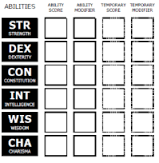These feats are feats I would choose nearly for any class as they just improve the game play for me personally. All these feats are from the core Players Handbook 3.5e.
1. Improved initative
This feat gives your a +4 to innitative increasing your chances of acting faster and going first in combat. Acting first is just better and increases your chances of defeating any foe.
2. Weapon Finesse
This feat allows you to use your dex instead of strength on attack roles with a light finesseable weapon. If your not a character that focuses in strength this feat can help you focus your abilitie scores on dex and still be a decent melee fighter. Howver you still use strcfor the damage but this would allow you to hit with yourndex modifier.
3. Quick Draw
This allows you to draw a weapon as a free action instead of a move action. This wouldmean you could still do a full round action or move and still take out your weapon. It is immensly useful.
4. Weapon Focus
You choose a weapon you are profficient with and this feat will gice you +1 on attack rolls with that soecific weapon type (ex. Longswords).








Recent Comments